Abstract
OBJECTIVES: This prospective study describes the impact of residential lead-based-paint hazard remediations on children with mildly elevated blood lead levels. METHODS: Changes in blood lead levels were observed following paint hazard remediation alone and in combination with soil abatement. RESULTS: After adjustment for the confounding variables paint hazard remediation alone was associated with a blood lead increase of 6.5 micrograms/dL (P = 0.5), and paint hazard remediation combined with soil abatement was associated with an increase of 0.9 microgram/dL (P = 36). CONCLUSIONS: Lead-based-paint hazard remediation as performed in this study, is not an effective secondary prevention strategy among children with mildly elevated blood lead levels.
Full text
PDF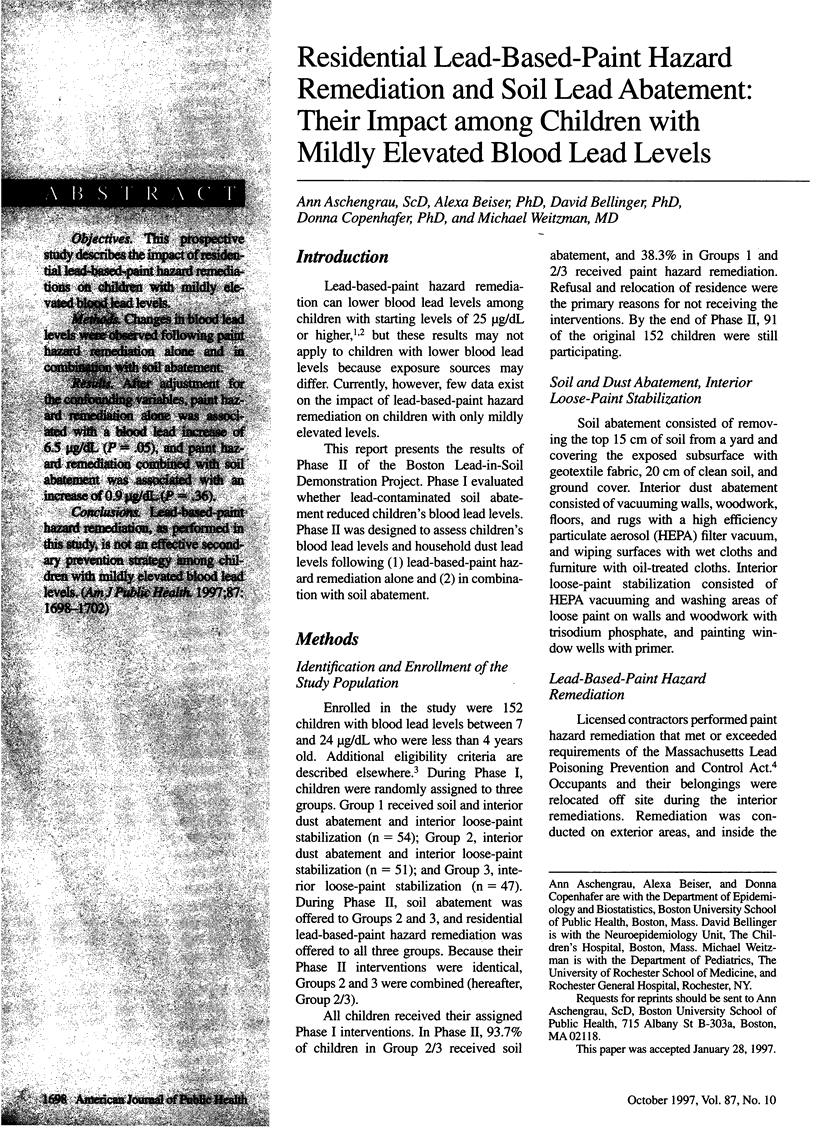
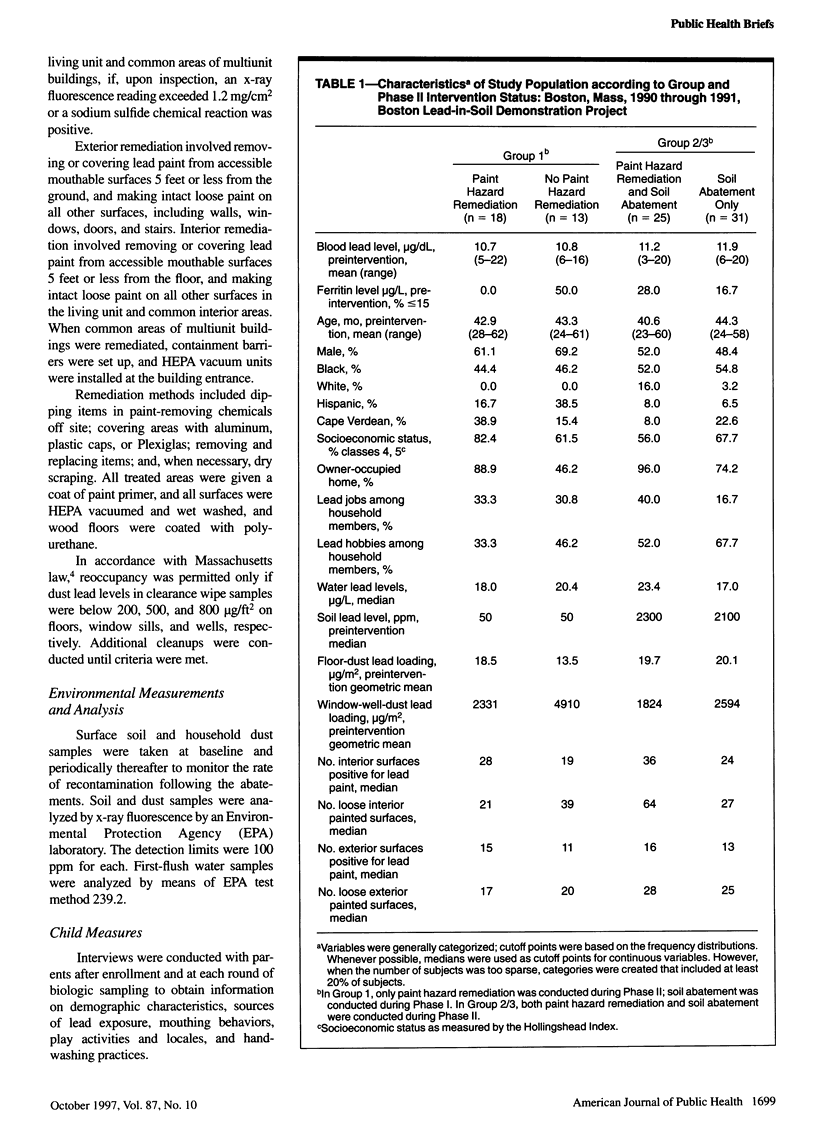
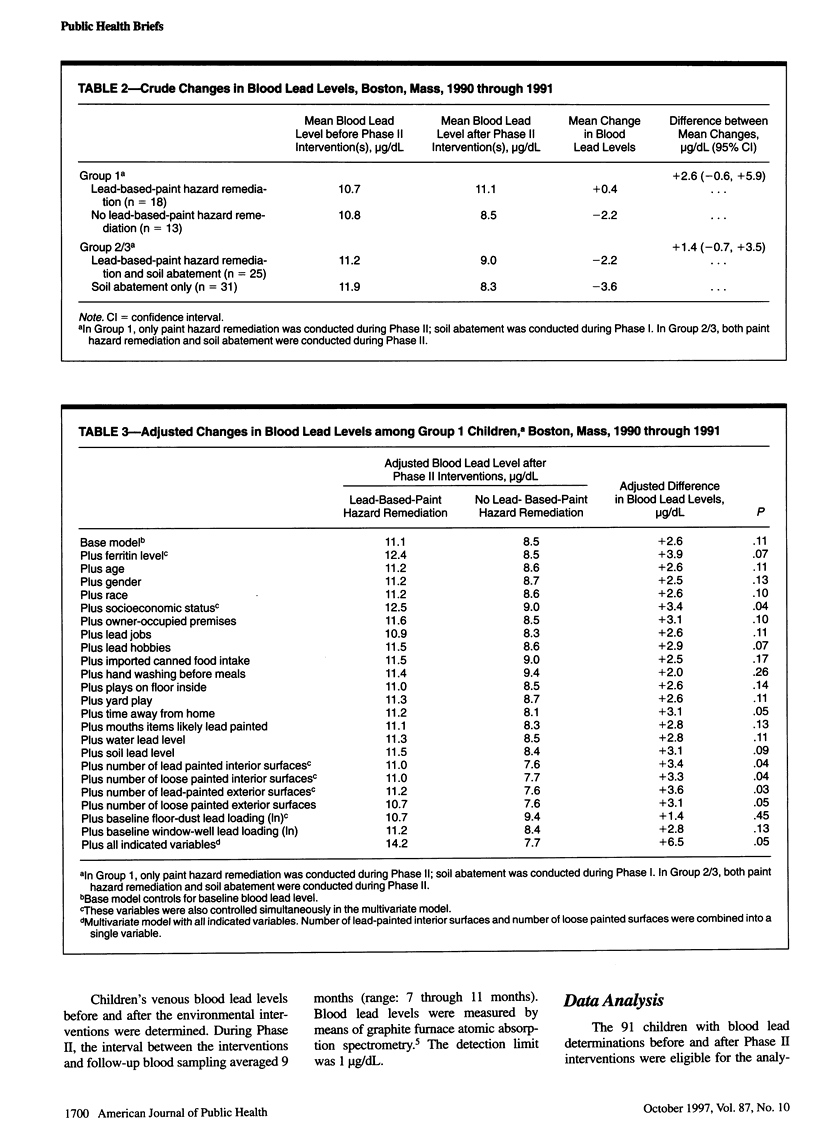
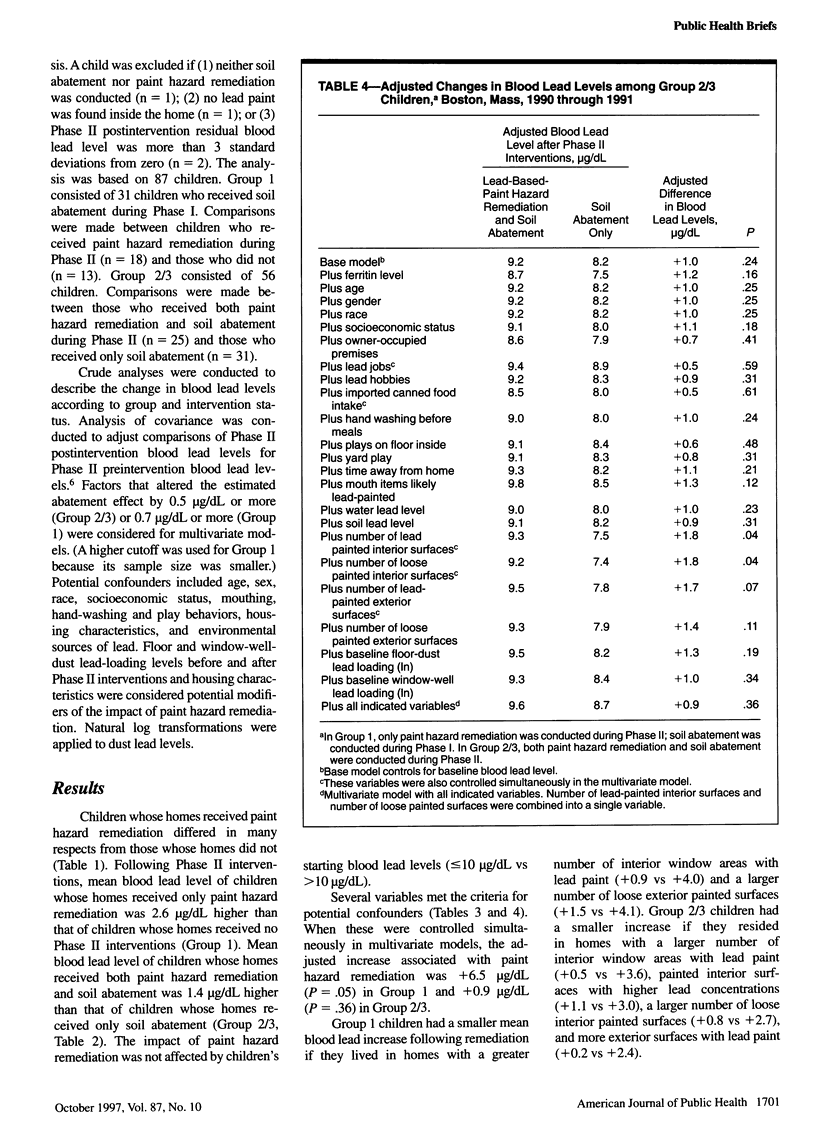
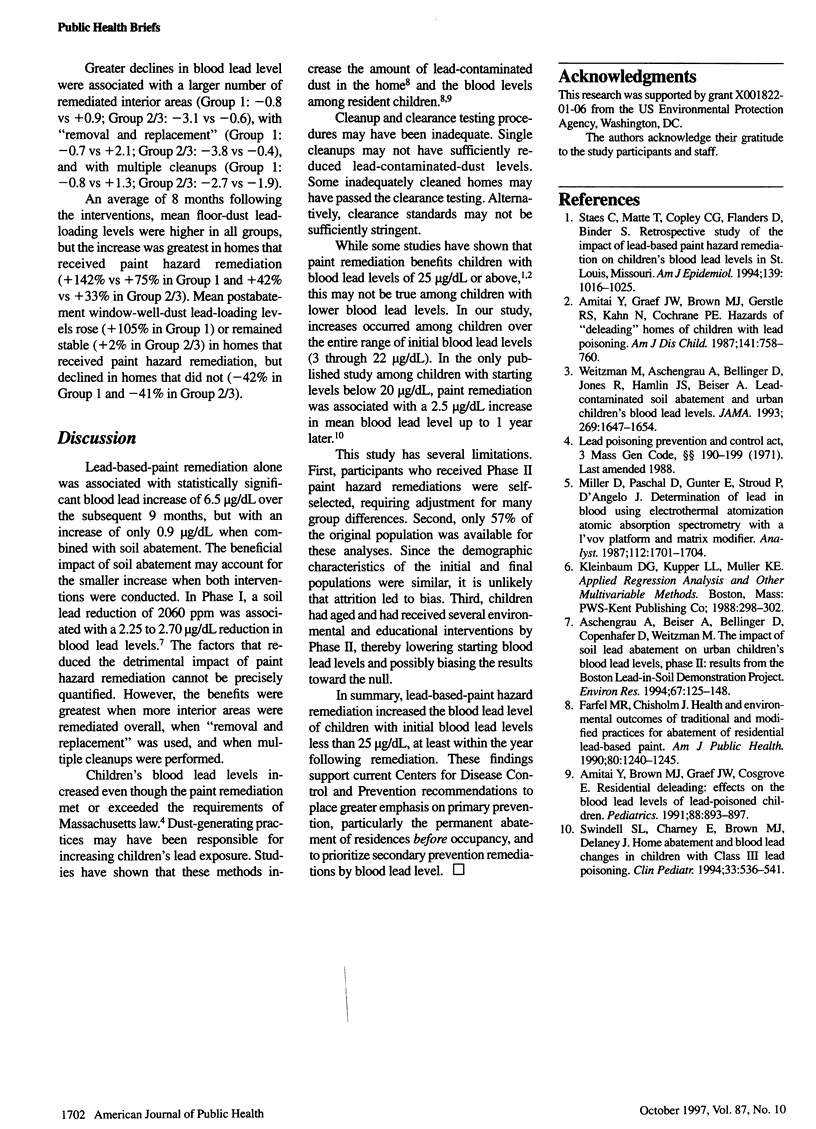
Selected References
These references are in PubMed. This may not be the complete list of references from this article.
- Amitai Y., Brown M. J., Graef J. W., Cosgrove E. Residential deleading: effects on the blood lead levels of lead-poisoned children. Pediatrics. 1991 Nov;88(5):893–897. [PubMed] [Google Scholar]
- Amitai Y., Graef J. W., Brown M. J., Gerstle R. S., Kahn N., Cochrane P. E. Hazards of 'deleading' homes of children with lead poisoning. Am J Dis Child. 1987 Jul;141(7):758–760. doi: 10.1001/archpedi.1987.04460070060024. [DOI] [PubMed] [Google Scholar]
- Aschengrau A., Beiser A., Bellinger D., Copenhafer D., Weitzman M. The impact of soil lead abatement on urban children's blood lead levels: phase II results from the Boston Lead-In-Soil Demonstration Project. Environ Res. 1994 Nov;67(2):125–148. doi: 10.1006/enrs.1994.1069. [DOI] [PubMed] [Google Scholar]
- Farfel M. R., Chisolm J. J., Jr Health and environmental outcomes of traditional and modified practices for abatement of residential lead-based paint. Am J Public Health. 1990 Oct;80(10):1240–1245. doi: 10.2105/ajph.80.10.1240. [DOI] [PMC free article] [PubMed] [Google Scholar]
- Miller D. T., Paschal D. C., Gunter E. W., Stroud P. E., D'Angelo J. Determination of lead in blood using electrothermal atomisation atomic absorption spectrometry with a L'vov platform and matrix modifier. Analyst. 1987 Dec;112(12):1701–1704. doi: 10.1039/an9871201701. [DOI] [PubMed] [Google Scholar]
- Staes C., Matte T., Copley C. G., Flanders D., Binder S. Retrospective study of the impact of lead-based paint hazard remediation on children's blood lead levels in St. Louis, Missouri. Am J Epidemiol. 1994 May 15;139(10):1016–1026. doi: 10.1093/oxfordjournals.aje.a116941. [DOI] [PubMed] [Google Scholar]
- Swindell S. L., Charney E., Brown M. J., Delaney J. Home abatement and blood lead changes in children with class III lead poisoning. Clin Pediatr (Phila) 1994 Sep;33(9):536–541. doi: 10.1177/000992289403300905. [DOI] [PubMed] [Google Scholar]
- Weitzman M., Aschengrau A., Bellinger D., Jones R., Hamlin J. S., Beiser A. Lead-contaminated soil abatement and urban children's blood lead levels. JAMA. 1993 Apr 7;269(13):1647–1654. [PubMed] [Google Scholar]


